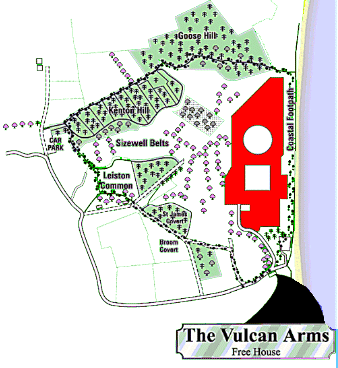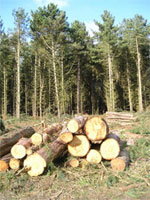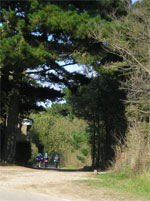The Vulcan Arms - Sizewell - Suffolk
Sizewell Circular Walks
Walk 1 - Goose Hill - Kenton Hill - Sizewell Belts
Difficulty 5 miles - 2 hour stroll - one short but steep incline to climb
Directions

From The Vulcan Arms, go over the stile opposite the pub car park and cut across the field towards the power station and the sea front car park. From here steps lead you down onto the coastal footpath. Proceed northwards past the power station where information boards detail the conservation and wildlife aspects of the coastal area. Carry on all the way past Sizewell A, (The square shaped building) and Sizewell B (the huge golf ball building) until the perimeter fence turns inland. Follow perimeter fence round and head towards the woodland. After 100 metres a footpath sign will direct you across a small bridge and onto the Goose Hills woodland footpath. This broad footpath takes you all the way through Goose Hill and then through Kenton Hills.
Keep to the main path until it turns a sharp left. Follow the blue arrows on the marker posts located alongside the footpath until you come to a sign directing you to The Sizewell Belts. Walk down here, past a small pond, over a stile and across the pasture.
The path then leads you up a steep bank and onto Leiston Common. Looking directly across the common you will see a small marker post located in the centre of the common. If you walk in a straight line towards and beyond this marker you will come to another stile. Go over this stile, turn left onto the next footpath which will lead you down through a thicket and onto Sandy Lane. Cross over Sandy Lane and follow the farm track up over the hill, past the woods on the left until the track bears round to the right. As it does so, you should see a gate on the left with a stile next to it. Proceed over the stile and along the lane until it junctions with a second Sandy Lane. Turn right and the lane will bring you out on the road, 200 yards from the pub
Information

Kenton and Goose Hill woodlands was planted by the Forestry Commission in 1958. Today it is managed for a number of objectives including wildlife conservation, landscape, recreation and timber production. The long term aim is to convert the woodland into a mixed native woodland and over 9000 broadleaved trees have been planted within the conifer mixture since 1990. Conifer plantations are thinned many times throughout their lives before finally harvesting the timber crop. The conifers in Goose Hill and Kenton Hills were thinned in 1994 and 1995 as part of the normal forestry management. There is an abundance of wildlife throughout the woodland from rabbits and foxes and even deer. Spring is greeted with carpets of bluebells. White admiral and speckled wood butterflies can be seen among the rhododendrons and foxgloves in the summer and as autumn approaches, colourful fungi spring throughout the woods.

Sizewell Belts was an unmanaged reed marsh until it was drained in the 18th Century. It is now a complex system of freshwater grazing marshes interspersed with dykes and narrow tree belts and rich in wildlife. Information boards along the waymarked route describe the flora and fauna to be seen through the seasons. Cattle and sheep are used to graze the marshes in the summer to maintain the meadow pasture. also traditional hay making is once more used tomanage the richest meadows. Without this grazing and cutting the meadows would degrade allowing coarser vegetation to dominate eventually returning the site to a fen and ultimately a wet woodland. During winter some of the marshes are flooded via a system of sluices to encourage winter visiting birds like widgeon, snipe and shoveler. In the spring, lapwing, gawall, mute swans and a pair of kingfishers may be seen nesting. In the summer the dykes are alive with many species of dragonflies and damselflies. The aquatic environment is also the home to some uncommon mammals such as otters, water voles and water shrews.